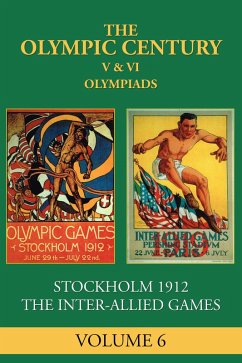Following the emotional success of the I Olympiad of the Modern Era in Athens in 1896, the Olympic movement struggled through more than a decade of disappointment and uncertainty. It would not be until 1912 in Stockholm that the Olympics rediscovered the magic of Athens, and struck on a model for the Games that endures to this day.The V & VI Olympiads, the sixth volume in The Olympic Century series, begins with the Games that finally showed the world what the modern Olympics could be-Stockholm 1912. Flawlessly planned and organized with typical Swedish precision, the Stockholm Games allowed the athletes to take centre stage. The book tells the story of Olympic heroes like Jim Thorpe, a Native American who claimed gold in both the pentathlon and decathlon before going on to play professional baseball, basketball and football; George S. Patton, the famed WWII general, who competed in the modern pentathlon; and Arnold Strode-Jackson who won gold in the 1,500 metres competing as an individual entry in what was called at the time "e;the greatest race ever run."e;Following Stockholm, the focus of the book shifts to the Olympics that never happened: the Games of the VI Olympiad - Berlin 1916. Planning for the Berlin Games began in 1912 and construction of the central venue, the 64,000-seat Deutsches Stadion, was completed in June 1913. But just over one year later, in July 1914, the start of World War I would postpone Berlin's Olympic dream for another twenty years. Juan Antonio Samaranch, former President of the International Olympic Committee, called The Olympic Century, "e;The most comprehensive history of the Olympic games ever published"e;.
Dieser Download kann aus rechtlichen Gründen nur mit Rechnungsadresse in A, B, BG, CY, CZ, D, DK, EW, E, FIN, F, GR, HR, H, IRL, I, LT, L, LR, M, NL, PL, P, R, S, SLO, SK ausgeliefert werden.


